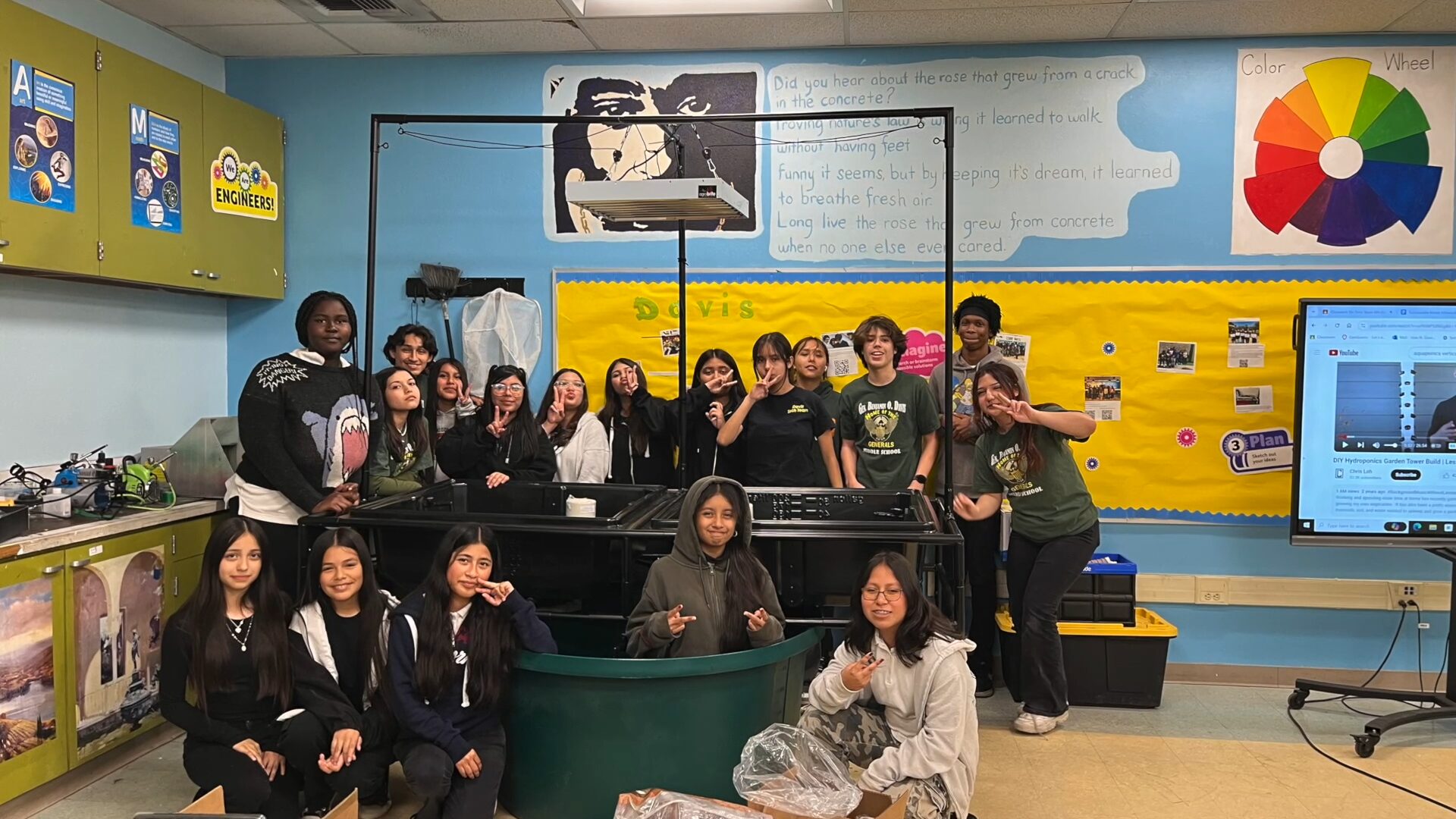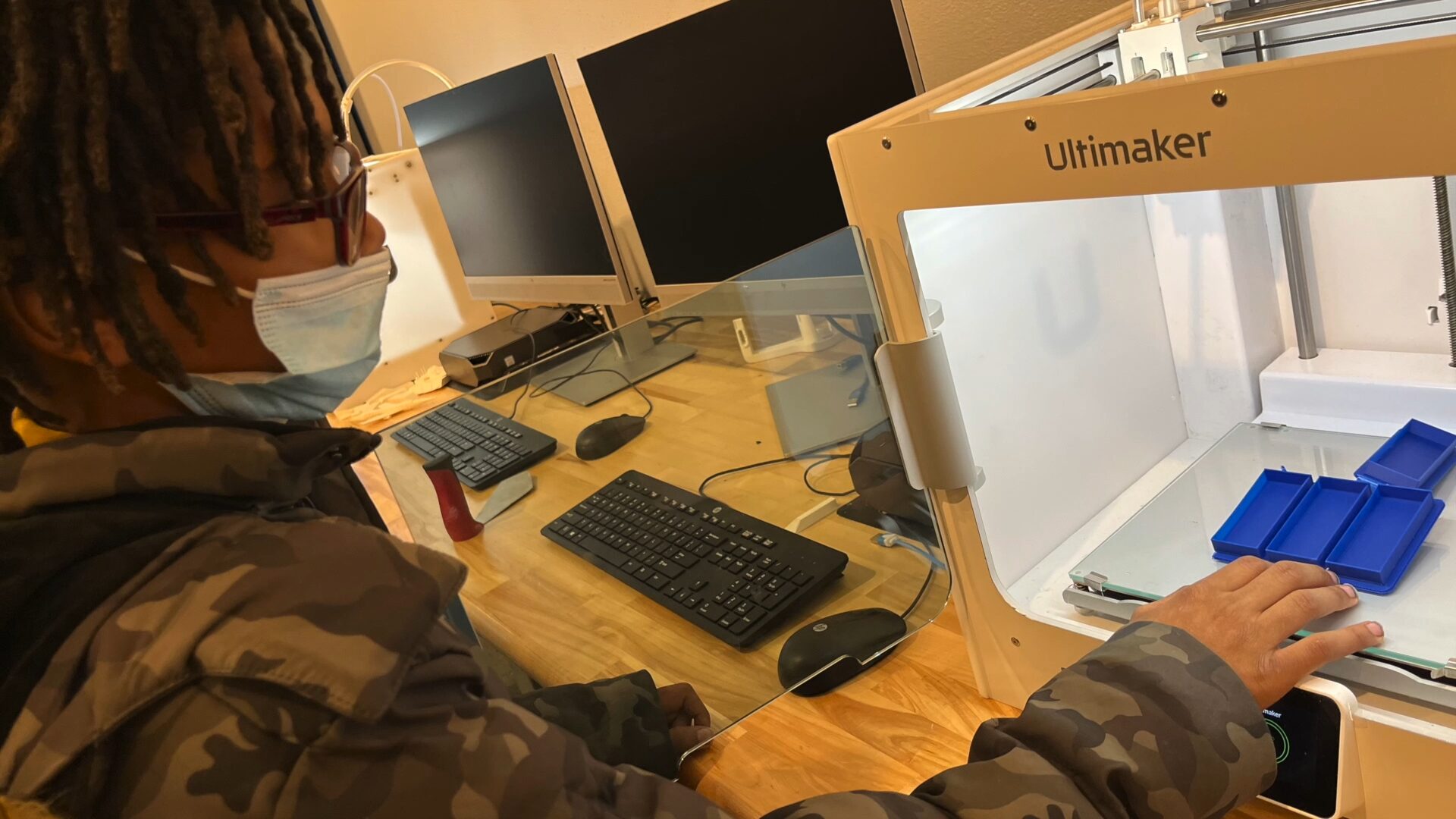
YouthMADE stands for Youth Making, Activism, Art, and Design in Education, representing a broad spectrum of youth-led creativity and innovation. Students at Davis Middle School in Compton Unified School District (California) shared their projects on sustainability at the YouthMADE Showcase—a virtual exhibition that highlighted the voices and projects from students at districts within the League of Innovative Schools. —at Digital Promise’s League of Innovative Schools convening.
Guided by their teacher Jose Gonzelez, the students started their projects by learning about the UN Sustainable Development Goals and how these 17 global goals connect to their local context. Inspired by Goal 2 to “End hunger, achieve food security and improve nutrition and promote sustainable agriculture,” and Goal 7 to “Ensure access to affordable, reliable, sustainable and modern energy for all,” four student groups worked to create aquaponics systems, and design infrastructure built and run by renewable sources.
Spinning off of a previous class project on sustaining life in space, students Thuy, Jaqueline, Rosa, Frida, and Leah considered how they can help feed people in their community and in other parts of the world. Their group landed on creating a vertical aquaponics system and fish farming. “We plan on using our concept for communities to grow crops and have fish farming in small places. We are also planning on using vertical farming so we can grow food anywhere,” said Thuy, an eighth grade student.

Students pose with their aquaponics system.
The group said they learned about the chemical process that makes aquaponics work as well as how to build their own vertical growth towers. Thuy added: “We are going to present our project to the other STEM classes and have other students come to our class to see our project. We would like to present our project to the Compton City Council. Last year we presented our Homeless Center Prototype there.”
Likewise, students Brando, Damion, and Caleb were motivated by the desire to feed communities around the world. “We created a scale model of an aquaponic system that would operate in a trailer that would be towed by a diesel semi-truck that we converted to electric power,” said Brando, a sixth grade student.” We have learned about sustainability and renewable energy and wanted to apply the ideas to help the world.”

A student prints a 3D model for their project.
Along the way, students have connected with experts in their community to build their projects. “We have had help from Maria Madrigal, a marine biologist from University of Southern California and are planning to visit a full scale system at the LA Kretz Campus. We would like to have more experts visit us to learn more about aquaponics,” Thuy said.
Another two student groups focused on sustainable infrastructure. Students Jackelin, Citlali, My’Joi, and Camila created a prototype of a sustainable classroom that runs on renewable energy.
“We learned about using sustainable materials such as bamboo, mycelium fungus, cork floors and using recycled steel. We learned how to use solar panels, solar water heaters, and how to use wind power to give electricity for our classroom. We learned how to cool and heat our home with simple things like sun roofs, using plants and facing our classroom towards the sunrise. We also learned about recycling our water and capturing rainwater to water our gardens,” said Jackelin, a seventh grade student.

Students work on a prototype for a sustainable classroom.
Students Karina R., Mateo, and Karina S. did a community walk to observe houses in their community and consider how they could be built more sustainably. They created a prototype for a house that uses solar energy and construction materials that have a minimal impact on the environment.
“We plan on using bamboo and mycelium to build quickly and sustainably. Mycelium is a super fungus; solidifying into bricks in darkness, mycelium becomes a perfect lightweight insulator. Bamboo is sustainable because it grows so fast that it can be quickly farmed. We also are going to use a gray water circulation system turning used drinking water into plant and grass water. All in all, using the environment around us we can conserve and create energy to run our home on a fully sustainable micro-grid,” said Karina R., an eighth grade student.

Students build their prototype for a sustainable house.
“We have a great Davis Student Tech Team which is made up of 6th, 7th, and 8th graders. Our teacher Mr. Gonzalez has been teaching us about sustainability, renewable energy and the United Nations Sustainable Development Goals. We have been learning to use technology and learning that we too, although we are students, can make changes in our community.” – Brando